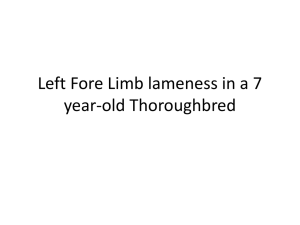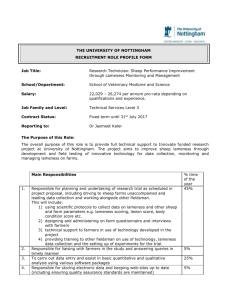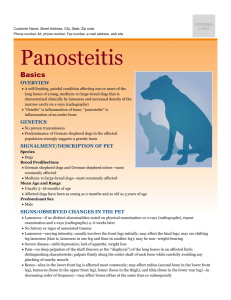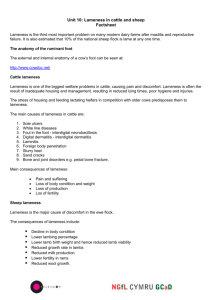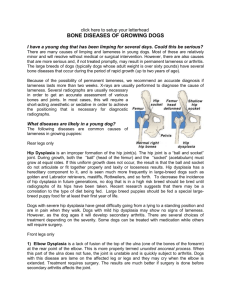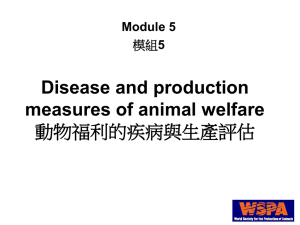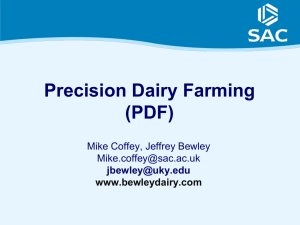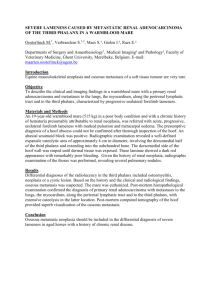MSA THE RESEARCH COLUMN June 2015 (2)
advertisement
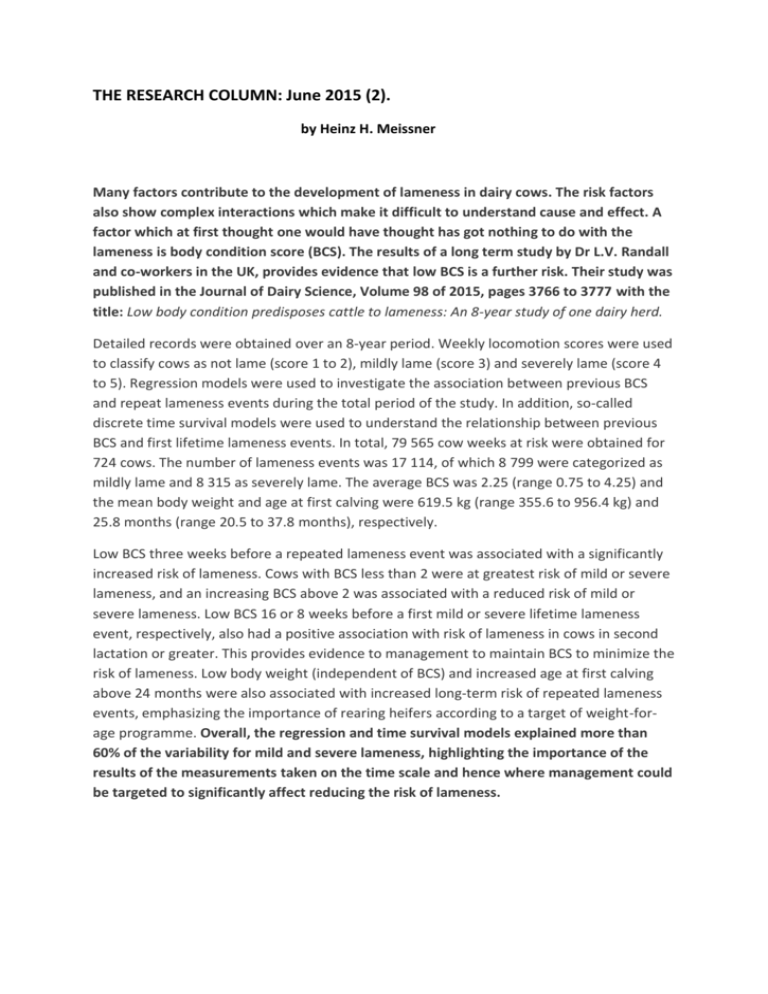
THE RESEARCH COLUMN: June 2015 (2). by Heinz H. Meissner Many factors contribute to the development of lameness in dairy cows. The risk factors also show complex interactions which make it difficult to understand cause and effect. A factor which at first thought one would have thought has got nothing to do with the lameness is body condition score (BCS). The results of a long term study by Dr L.V. Randall and co-workers in the UK, provides evidence that low BCS is a further risk. Their study was published in the Journal of Dairy Science, Volume 98 of 2015, pages 3766 to 3777 with the title: Low body condition predisposes cattle to lameness: An 8-year study of one dairy herd. Detailed records were obtained over an 8-year period. Weekly locomotion scores were used to classify cows as not lame (score 1 to 2), mildly lame (score 3) and severely lame (score 4 to 5). Regression models were used to investigate the association between previous BCS and repeat lameness events during the total period of the study. In addition, so-called discrete time survival models were used to understand the relationship between previous BCS and first lifetime lameness events. In total, 79 565 cow weeks at risk were obtained for 724 cows. The number of lameness events was 17 114, of which 8 799 were categorized as mildly lame and 8 315 as severely lame. The average BCS was 2.25 (range 0.75 to 4.25) and the mean body weight and age at first calving were 619.5 kg (range 355.6 to 956.4 kg) and 25.8 months (range 20.5 to 37.8 months), respectively. Low BCS three weeks before a repeated lameness event was associated with a significantly increased risk of lameness. Cows with BCS less than 2 were at greatest risk of mild or severe lameness, and an increasing BCS above 2 was associated with a reduced risk of mild or severe lameness. Low BCS 16 or 8 weeks before a first mild or severe lifetime lameness event, respectively, also had a positive association with risk of lameness in cows in second lactation or greater. This provides evidence to management to maintain BCS to minimize the risk of lameness. Low body weight (independent of BCS) and increased age at first calving above 24 months were also associated with increased long-term risk of repeated lameness events, emphasizing the importance of rearing heifers according to a target of weight-forage programme. Overall, the regression and time survival models explained more than 60% of the variability for mild and severe lameness, highlighting the importance of the results of the measurements taken on the time scale and hence where management could be targeted to significantly affect reducing the risk of lameness.
